Basketball Zone Play - Michigan State Tom Izzo's "Fist-Down"
From the Coach’s Clipboard Basketball Playbook"Helping coaches coach better..."
Disclosure: This page contains affiliate links, which means that Coach's Clipboard receives a small commission (at no cost to you) if you make a purchase using these links.
Tom Izzo has already compiled an illustrious career as Head Coach at Michigan State University, and will certainly enter the Hall of Fame one day. His teams are noted for toughness, competitiveness and great rebounding. Coach Izzo's 2000 MSU team were NCAA Champions, and the 2009 team was runner-up, losing in the final game to North Carolina. Coach Izzo is a 3-time National "Coach of the Year".
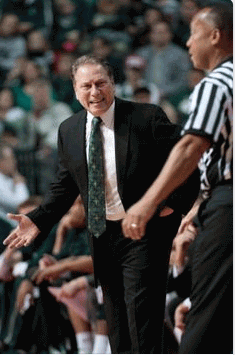
MSU Coach Tom Izzo
We start the offense vs the 2-3 zone as seen in diagram A. We place our best shooters, O2 on the right wing, and O3 at the left (weakside) short-corner. Our worst scorer is at the O5 spot at the high post, and O4 starts on the weakside, left wing.
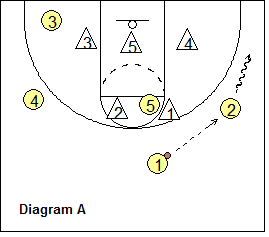
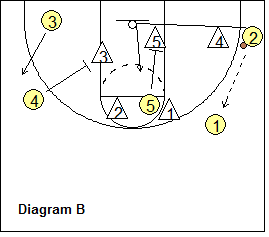
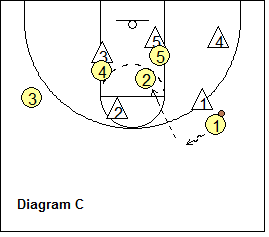
O1 passes to O2 and O2 dribbles toward the corner, and then passes back up to O1 who has replaced O2 on the wing. As O2 dribbles down, O5 screens the middle big defender X5, and O4 down-screens the weakside low defender X3 (diagram B), and O3 cuts out to the weakside (left) wing. O2 passes back to O1 and cuts hard around O5's screen into the open spot in the middle of the paint. After receiving the pass from O2, O1 delays a second and then dribbles up for a good passing angle to make the pass to O2 inside (diagram C). O2 might have an open shot here.
The diagrams below show several options. After screening, O5 posts up on the right side, but since he is not a great scorer, O5 is not a priority option, although could be open if X5 comes up to defend on O2. After screening, O4 cuts to the hoop and could get a quick bounce pass from O2 for a lay-up (diagram D).
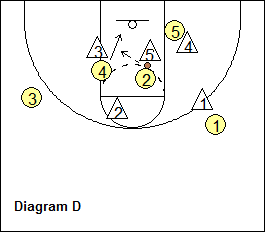
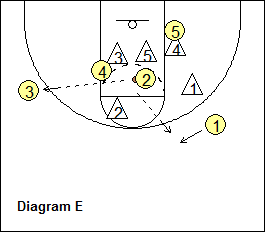
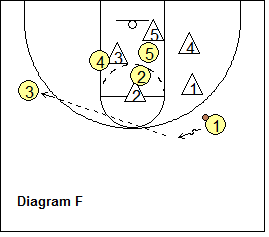
In diagram E, if O4 is not open (the X3 defender stays on O4), usually our shooter O3 is wide-open for a pass from O2, as the X2 defender will tend to collapse down toward O2 in the paint. Also notice that after passing in to O2, O1 re-locates to an open spot also, and could also get the pass from O2 for an open shot.
Finally, O1 must not try to jam or force a pass into O2 if it looks too clogged up inside (diagram F). In this case, O3 will be open on the skip-pass (from O1) for a 3-point shot.